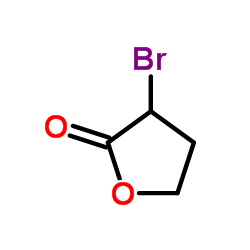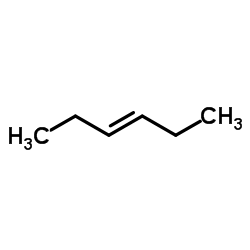alpha-decalactone
Modify Date: 2024-01-08 11:03:15

alpha-decalactone structure
|
Common Name | alpha-decalactone | ||
|---|---|---|---|---|
| CAS Number | 18436-37-8 | Molecular Weight | 170.24900 | |
| Density | 0.946 g/cm3 | Boiling Point | 266.7ºC at 760 mmHg | |
| Molecular Formula | C10H18O2 | Melting Point | N/A | |
| MSDS | Chinese USA | Flash Point | 105.8ºC | |
| Name | 3-hexyloxolan-2-one |
|---|---|
| Synonym | More Synonyms |
| Density | 0.946 g/cm3 |
|---|---|
| Boiling Point | 266.7ºC at 760 mmHg |
| Molecular Formula | C10H18O2 |
| Molecular Weight | 170.24900 |
| Flash Point | 105.8ºC |
| Exact Mass | 170.13100 |
| PSA | 26.30000 |
| LogP | 2.51990 |
| Vapour Pressure | 0.00852mmHg at 25°C |
| Index of Refraction | 1.446 |
|
Section I.Chemical Product and Company Identification Chemical Name alpha-Hexyl-gamma-butyrolactone Portland OR Synonym2(3H)-Furanone, 3-hexyldihydro-(8CI, 9CI) Chemical FormulaC10H18O2 18436-37-8 CAS Number
Section II.Composition and Information on Ingredients Chemical NameCAS Number Percent (%)TLV/PELToxicology Data alpha-Hexyl-gamma-butyrolactone18436-37-8 Not available. Not available.Not available. Section III. Hazards Identification No specific information is available in our data base regarding the toxic effects of this material for humans. However, Acute Health Effects exposure to any chemical should be kept to a minimum. Skin and eye contact may result in irritation. May be harmful if inhaled or ingested. Always follow safe industrial hygiene practices and wear proper protective equipment when handling this compound. Chronic Health EffectsCARCINOGENIC EFFECTS : Not available. MUTAGENIC EFFECTS : Not available. TERATOGENIC EFFECTS : Not available. DEVELOPMENTAL TOXICITY: Not available. There is no known effect from chronic exposure to this product. Repeated or prolonged exposure to this compound is not known to aggravate existing medical conditions. Section IV.First Aid Measures Check for and remove any contact lenses. DO NOT use an eye ointment. Flush eyes with running water for a minimum of 15 Eye Contact minutes, occasionally lifting the upper and lower eyelids. Seek medical attention. Treat symptomatically and supportively. Skin ContactAfter contact with skin, wash immediately with plenty of water. Gently and thoroughly wash the contaminated skin with running water and non-abrasive soap. Be particularly careful to clean folds, crevices, creases and groin. Cover the irritated skin with an emollient. Seek medical attention. Treat symptomatically and supportively. Wash any contaminated clothing before reusing. InhalationIf the victim is not breathing, perform artificial respiration. Loosen tight clothing such as a collar, tie, belt or waistband. If breathing is difficult, oxygen can be administered. Seek medical attention. Treat symptomatically and supportively. IngestionINDUCE VOMITING by sticking finger in throat. Lower the head so that the vomit will not reenter the mouth and throat. Loosen tight clothing such as a collar, tie, belt, or waistband. If the victim is not breathing, administer artificial respiration. Examine the lips and mouth to ascertain whether the tissues are damaged, a possible indication that the toxic material was ingested; the absence of such signs, however, is not conclusive. Seek immediate medical attention and, if possible, show the chemical label. Treat symptomatically and supportively. Section V.Fire and Explosion Data Not available. May be combustible at high temperature.Auto-Ignition Flammability Flash PointsFlammable LimitsNot available. Not available. Combustion ProductsThese products are toxic carbon oxides (CO, CO2). Fire Hazards No specific information is available regarding the flammability of this compound in the presence of various materials. Risks of explosion of the product in presence of mechanical impact: Not available. Explosion Hazards Risks of explosion of the product in presence of static discharge: Not available. No additional information is available regarding the risks of explosion. Fire Fighting Media SMALL FIRE: Use DRY chemicals, CO2, water spray or foam. LARGE FIRE: Use water spray, fog or foam. DO NOT use water jet. and Instructions Continued on Next Page alpha-Hexyl-gamma-butyrolactone Section VI.Accidental Release Measures Spill CleanupIn case of a spill and/or a leak, always shut off any sources of ignition, ventilate the area, and exercise caution. Absorb with an inert material and put the spilled material in an appropriate waste disposal. Finish cleaning the spill by rinsing any Instructions contaminated surfaces with copious amounts of water. Consult federal, state, and/or local authorities for assistance on disposal. Section VII. Handling and Storage Keep away from heat and sources of ignition. Mechanical exhaust required. When not in use, tightly seal the container and Handling and Storage store in a dry, cool place. Avoid excessive heat and light. Do not breathe gas, fumes, vapor or spray. In case of insufficient Information ventilation, wear suitable respiratory equipment. If you feel unwell, seek medical attention and show the label when possible. Treat symptomatically and supportively. Avoid contact with skin and eyes. Always store away from incompatible compounds such as oxidizing agents. Section VIII. Exposure Controls/Personal Protection Provide exhaust ventilation or other engineering controls to keep the airborne concentrations of vapors below their respective Engineering Controls threshold limit value. Ensure that eyewash station and safety shower is proximal to the work-station location. Personal ProtectionSplash goggles. Lab coat. Vapor respirator. Boots. Gloves. A MSHA/NIOSH approved respirator must be used to avoid inhalation of the product. Suggested protective clothing might not be sufficient; consult a specialist BEFORE handling this product. Exposure LimitsNot available. Section IX. Physical and Chemical Properties Liquid.Solubility Physical state @ 20°CNot available. 0.96 Specific Gravity 170.25 Molecular WeightPartition CoefficientNot available. Boiling PointNot available.Vapor PressureNot available. Not available.Not available. Melting PointVapor Density Not available.VolatilityNot available. Refractive Index Not available. Critical TemperatureNot available.Odor ViscosityNot available.TasteNot available. Section X.Stability and Reactivity Data Stability This material is stable if stored under proper conditions. (See Section VII for instructions) Conditions of InstabilityAvoid excessive heat and light. Incompatibilities Reactive with oxidizing agents. Section XI. Toxicological Information Not available. RTECS Number Eye contact. Ingestion. Inhalation. Routes of Exposure Toxicity DataNot available. Chronic Toxic EffectsCARCINOGENIC EFFECTS : Not available. MUTAGENIC EFFECTS : Not available. TERATOGENIC EFFECTS : Not available. DEVELOPMENTAL TOXICITY: Not available. There is no known effect from chronic exposure to this product. Repeated or prolonged exposure to this compound is not known to aggravate existing medical conditions. Acute Toxic EffectsNo specific information is available in our data base regarding the toxic effects of this material for humans. However, exposure to any chemical should be kept to a minimum. Skin and eye contact may result in irritation. May be harmful if inhaled or ingested. Always follow safe industrial hygiene practices and wear proper protective equipment when handling this compound. Continued on Next Page alpha-Hexyl-gamma-butyrolactone Section XII.Ecological Information EcotoxicityNot available. Not available. Environmental Fate Section XIII. Disposal Considerations Recycle to process, if possible. Consult your local or regional authorities. You may be able to dissolve or mix material with a Waste Disposal combustible solvent and burn in a chemical incinerator equipped with an afterburner and scrubber system. Observe all federal, state, and local regulations when disposing of this substance. Section XIV. Transport Information DOT ClassificationNot a DOT controlled material (United States). Not applicable. PIN Number Proper Shipping NameNot applicable. Not applicable. Packing Group (PG) DOT Pictograms Section XV. Other Regulatory Information and Pictograms TSCA Chemical InventoryThis compound is ON the EPA Toxic Substances Control Act (TSCA) inventory list. (EPA) WHMIS ClassificationNot available. (Canada) EINECS Number (EEC) 242-316-3 EEC Risk StatementsNot available. SECTION 16 - ADDITIONAL INFORMATION N/A |
| Risk Phrases | R20/21/22 |
|---|---|
| Safety Phrases | 26-36/37/39 |
| HS Code | 2932209090 |
|
~49% 
alpha-decalactone CAS#:18436-37-8 |
| Literature: Organic Letters, , vol. 15, # 11 p. 2826 - 2829 |
|
~% 
alpha-decalactone CAS#:18436-37-8 |
| Literature: Bulletin de la Societe Chimique de France, , vol. <5> 2, p. 80,85 |
| Precursor 3 | |
|---|---|
| DownStream 0 | |
| HS Code | 2932209090 |
|---|---|
| Summary | 2932209090. other lactones. VAT:17.0%. Tax rebate rate:13.0%. . MFN tariff:6.5%. General tariff:20.0% |
| EINECS 242-316-3 |
| alpha-Hexyl-gaMMa-butyrolactone |
| 3-hexyl-dihydro-furan-2-one |
| 3-Hexyldihydro-2(3H)-furanone |
| 3-Hexyl-2-oxo-tetrahydrofuran |
| 2(3H)-Furanone,3-hexyldihydro |


